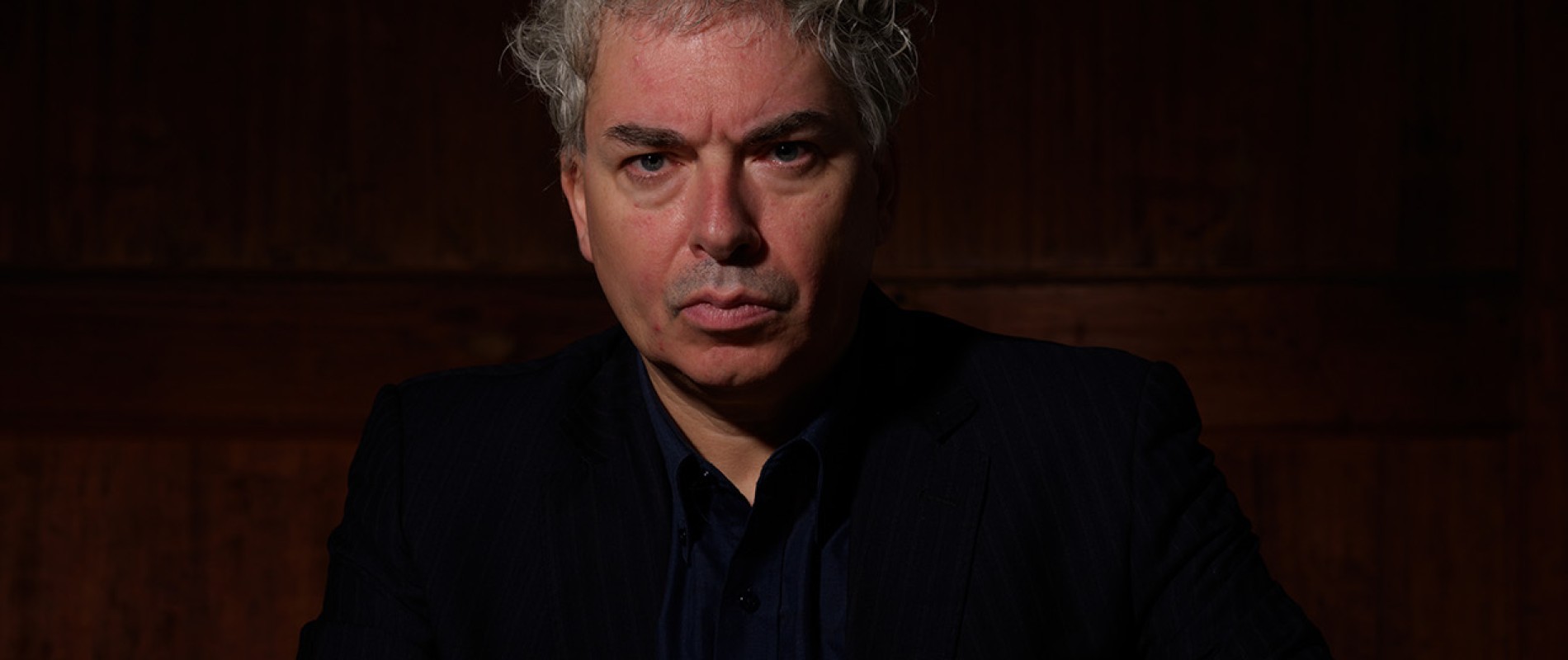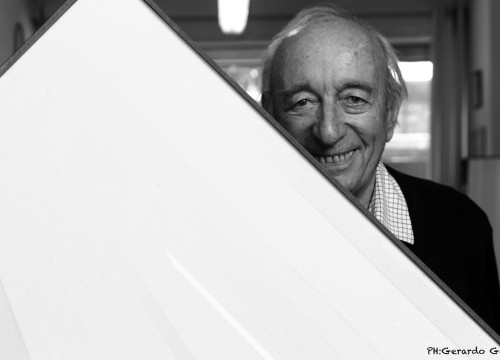With Nanof, the composer investigates the Fernando Oreste Nannetti story, psychiatric patient exponent of art brut
Between the '800 and '900, everything changed, in visual art as in music: dissonance takes more and more space, the avant-garde disrupts the systems and the very sense of art, by removing the pregnancy of the concept of beautiful or ugly. Kandinsky invites us to listen to the colors.
Every civilization gives itself its way of recognizing sound as music - a phenomenon that is repeated with determined rules and compositional styles. Ways and rules evolve. Contemporary music comes out of the superstructures of the rules, from the ordering principle that imposes direction to proceed, to recover the physicality of sound.
New scripts and new structures are invented. Pure sound is sought.
Arnold Schönberg (1874-1951) breaks away from the tonal system by proposing twelve-tone: no longer just seven notes, but a random series of the twelve sounds of the chromatic scale of equal value and no hierarchy between them. Among the experiences of breaking with tradition, the school of Darmstadt (Nono, Maderna, Boulez, Stockhausen) also takes into account the hazard and randomness.
The research goes as far as the cancellation of the composition itself: John Cage (1912-1992) invites us to listen to the silence - and, in the roar of silence, “the nothing that happens” - and to study Duchamp.
"IN NANNETTI I FOUND INSPIRATION FOR MY NEED TO DEAL WITH MUSIC THE CRAZY RELATIONSHIP WITH THE NORMAL?"
One of the greatest composers of the twentieth century, Giacomo Manzoni (1932), is among the protagonists and promoters in Italy of new music. His student is Antonio Agostini (1969), guitarist and composer, who, in his rich repertoire, has written songs as a tribute to artists such as Tinguely, Klein, Giacometti, Balla, Turcato, Vedova, tablature that arise from ideas and become paths of relationship. He is the author of Nanof, an illuminating example of musical dramaturgical composition, which tells the story of Fernando Oreste Nannetti (1927-1994), alias NOF4, who arrived at Ferri, judicial pavilion of the Psychiatric Hospital of Volterra, in 1958. Schizophrenic? Demented? Graffiti artist, little-known protagonist of art brut, who leaves traces of himself on the walls of the courtyard of the asylum, calling himself “Astronautic Mining Engineer in the mental system of time space”. For years he engraved, with a metal buckle, his stone diary on the walls. He says he telepathically receives messages and spreads them through an archaic writing invented with signs and with geometric and stylized figures.
Agostini dedicates to Nannetti eight studies for soprano (Felicita Brusoni), electric guitar, saxophone, double bass, orchestral ensemble and electronic music, on a libretto written with Davide Toschi. A female voice: mother? Companion? Nannetti himself? Projection of his mind? His breath combined with the layered sound of electrical appliances (the noise of a refrigerator or a television out of tune) what does it want to be?
“It is a metaphor for the telepathic transmission medium of which Nannetti speaks, an ideal antenna with the ‘outside’ world, or perhaps a higher dimension where to look for new contacts, simply, strongly, human,” the musician explains.
Why did you choose the figure of Nanof-Nannetti, “the invisible man armed with a cathodic buckle,” as he portrays himself? “In his research for ‘dignity of the living’ and the need to find other ways of communication, of escape from solitude, of reaching the scratch in the stone as a sign, as a word, represented for me a contemporary human model, for a compositional need to deal with music the relationship of the ‘crazy’ with the ‘normal’, the search for human communication and deep in an era where you have the feeling of living continuously in overdose of information and contact, and that instead seems to push to alienation and loneliness.” Sound and vision join in his scores by engaging signs, for a multi-sensory encounter. Every writing tastes like graffiti.
Life
Antonio Agostini was born in Viareggio on July 7, 1969. Guitarist, he began his musical studies with Lilia Bemi in Viareggio; he studied composition at the state conservatory “G.Puccini” in La Spezia and privately with Riccardo Dapelo. He studied composition with Giacomo Manzoni (1996-2002) at the music school in Fiesole, where he got a scholarship for the course for 2001/2002. He follows courses and masterclasses of K. Stockhausen, L. Berio, Pierre Boulez, S. Sciarrino, A. Guarnieri, H. Lachenmann, L. Francesconi, M. Stroppa, S. Bussotti and N. Sani. He won various national and international composition awards: “D. Shostakovich” (Moscow), “Veretti Prize”, “Musici Mojanesi”, “Sirga Festival” and many others. He is invited by international music departments, universities and conservatories to hold masterclasses in analysis and composition, and concerts with his music: EAFIT University of Medellin (Colombia), Edison Denisov College (Tomsk, Russia), Hope University of Liverpool and others. He was a composer guest at “Galerie Mario Mazzoli” (Berlin), Festival Edison Denisov“ (Tomsk), Festival “Angel Field” (Liverpool), Bellagio Music Festival”, “Festival delle Cinque Giornate di Milano” “Italian Composers Forum” (Milan), “Festival Wien Modern” (Wien), “SpazioMusica” (Cagliari), “Nuova Consonanza - Franco Evangelisti” (Rome), “Compositori a Confronto” (R. Emilia), “Festival Cultural Mazatlan” (Mexico), “Dissonanzen Festival” (Naples), “Taverna Maderna” (Padua) and “Parade Electronique” (Milan). His music from solo instrument to vocal and symphonic music has been performed, in Italy and abroad, by musicians, singers and well-known conductors such as Irvine Arditti, Rohan De Saram, Vinko Globokar, F. E. Scogna, Yalda Zamani, Alexei Vinogradov, MotoContrario Ensemble, Multilateral Ensemble, Reconsil Ensemble and many more.

























